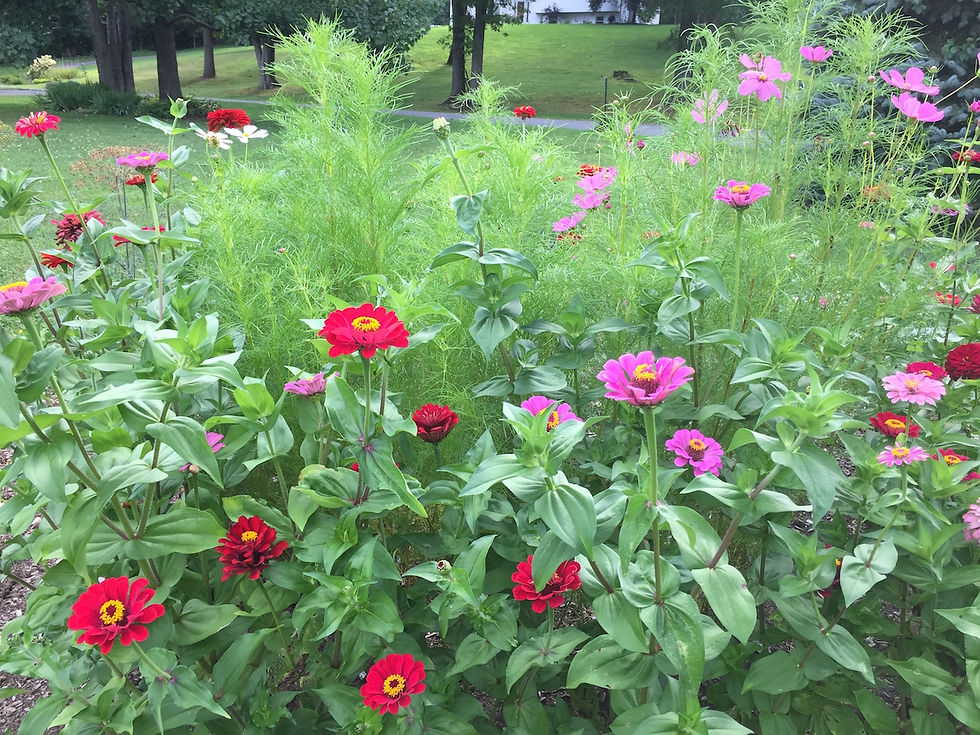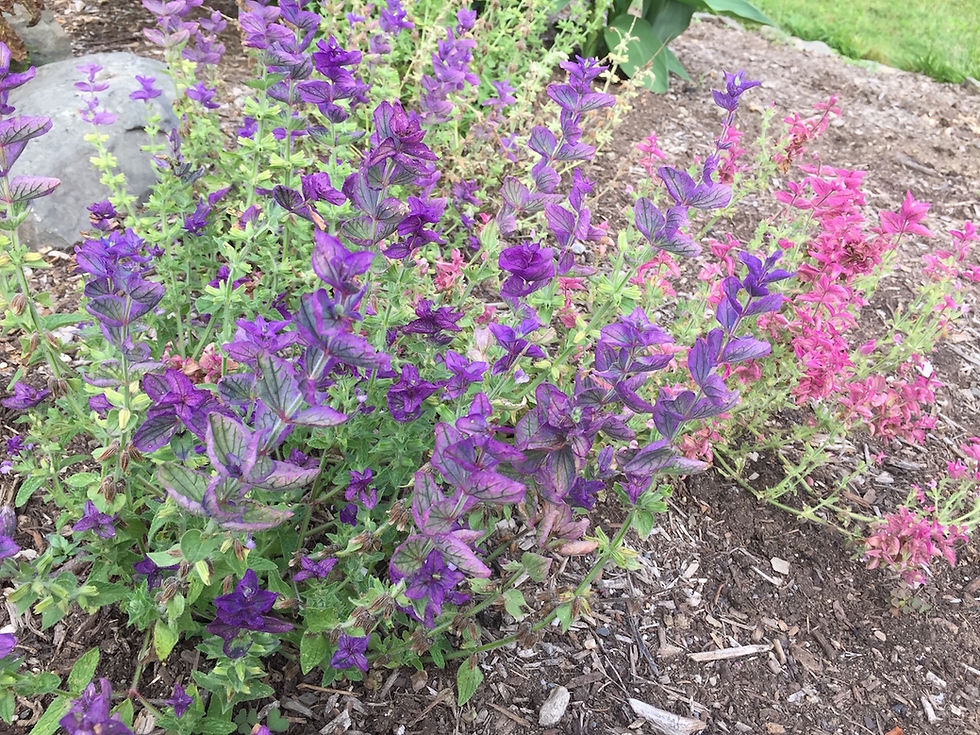Weed It and Reap: Seedy is Better than Weedy!
- andreasachs1
- Aug 16, 2021
- 3 min read
Updated: Aug 18, 2021
By Victoria Rolfe

As we are in the midst of picking and eating and preserving this year’s bounty, it is also time to start looking forward to next year’s garden. Here’s another thing you can be doing now: let some of your vegetable and flower plants go to seed!




Yes, you can also save seeds from your fruiting crops (peppers, cucumbers, tomatoes, squash, etc.). This is best done when they are nearing the end of their productive life, so you need to let the fruit (vegetable) grow to an extra-ripe stage to develop mature viable seeds. If you do this during peak growing season, you run the risk of “turning off” the plant, When it senses that it has produced mature seeds (its life mission) it will send a signal to the plant that it is done and it is time to close up shop.
Seed saving is best done with your heirloom (or non-hybrid) varieties, as second-generation hybrid seeds may not grow true to their parent plants and thus may lose some of the qualities for which they were hybridized.
To save your pod vegetables, such as string beans or snow peas, just stop picking them when the plants are nearing the end of their production and let the remaining beans grow “beany” and dry out on the plant.

Even if you don’t harvest the seeds, as long as you let the plants go to seed out there, without being so quick to pull your plants and clean up your garden, Mother Nature will often do the work for you. She will just go ahead and plant the seeds and you can delight in surprise “volunteer” veggies and flowers for next year. I very rarely plant lettuce anymore. I just let my lettuce plants go to seed and have a new crop growing all over my garden the following spring.



This is another very busy and productive month in our garden season, but don’t be overwhelmed. After this, things will begin to wind down. Just enjoy and delight in those lovely warm end-of-summer days and your rich garden bounty.
Victoria Rolfe has had a love of gardening all her life, from the time she was a tiny child coveting the daffodils growing in her neighbor’s yard (and wondering why she couldn’t have them in her own), to her teenage years when she took her pot experimentation in a different direction by growing the seeds she extracted from the bag into a beautiful marijuana plant on her bedroom windowsill. She went on in her adult years to feed her family by growing a huge and bountiful vegetable garden, as well as beautifying her three-acre property with an array of ornamental trees, bushes and flowers in the magnificent Hudson Valley region of New York.
Victoria learned a great deal in the process of all this plant experimentation. She then added to that knowledge by taking courses with the Cornell Cooperative Extension to become a Master Gardener Volunteer. In her volunteer capacity, she helps to educate the public on gardening through classes and information booths, most notably at the Dutchess County N.Y. Fair each August. Throughout the summer months, Victoria is most likely to be found among the weeds, either in her own garden or those of others who actually pay her to play in their dirt and do the thing she loves best, delight in the magical world of gardening.
Victoria is not only a gardening aficionado; she is also passionate about helping people live a better life on less money. Visit her website and blog at brightfuture2budget4.weebly.com, or email her at brightfuture2budget4@gmail.com.
Comments